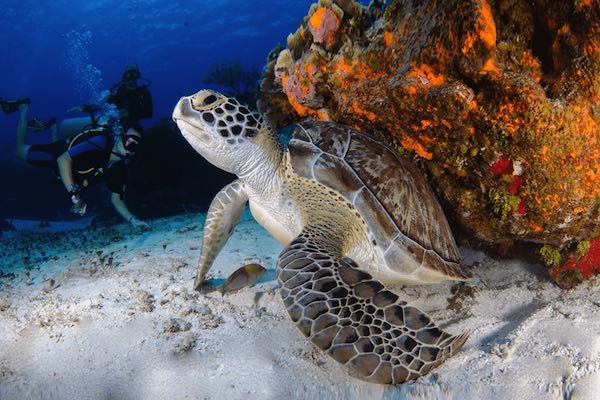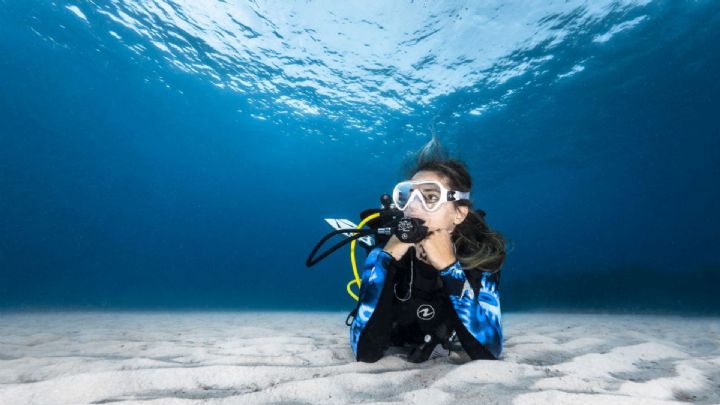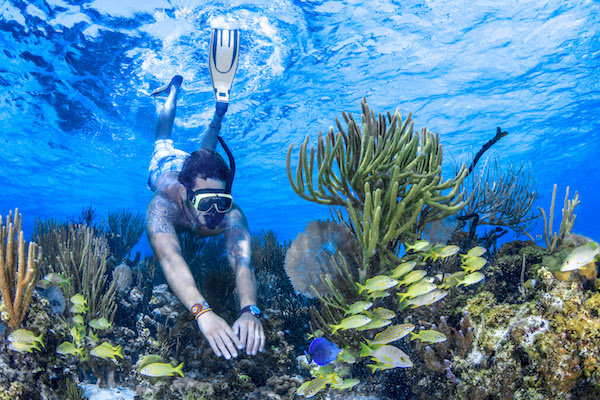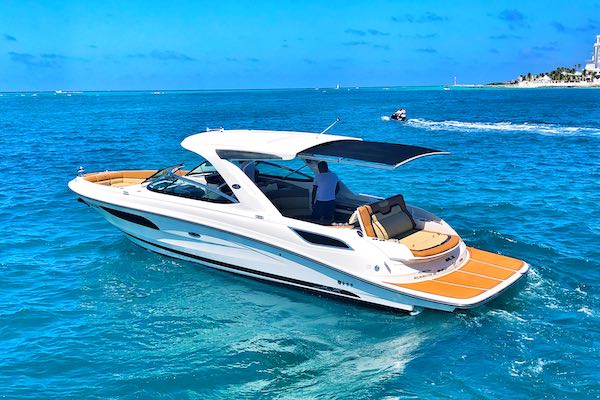The Punta Sur drift dive is one to remember! Be on the look out for mating turtles during the spring and summer season. It’s also common to spot playful pods of dolphins and schools of barracuda here.
Punta Sur is located in a very important area for the reproduction of sea turtles. Every year hundreds of turtles approach the beaches of Isla Mujeres to mate and later lay their eggs on the white sands of the island.
The Turtle Dive at Punta Sur
Punta Sur is located at the southern tip of Isla Mujeres where two currents meet. A constant powerful current and a depth of 35-50 feet makes Punta Sur the perfect place for mating turtles to find their counterpart.
To scuba dive at Punta Sur, we position our boat on the bay side of Isla Mujeres. Then, once in the water, we start drifting south, ultimately doing a U turn around the tip off the island!
It is here where you can see amazing numbers of turtles mating. They congregate together and the males chase the females. It is amazing to see massive turtles gracefully soaring around.
Additionally, here you can also see the remains of an old ship wreck. Particularly a 400 year old anchor from a Spanish Galleon and the times of piracy on the island.
Mating Turtles on Isla Mujers
There are many types of turtles you can see here in late spring and early summer. Isla Mujeres we have 3 of the 7 species of sea turtles: the Green Turtle, the Loggerhead, and the Hawksbill.
The turtle mating season is from May to June. From July to October you can spot turtles on the eastern beaches of the island, slowly digging nests in which to lay their eggs. On average, a sea turtle lays 100 eggs (between 50 – 200).
Green Sea Turtles
Green Sea Turtles face a number of dangers that have led to their listing as an endangered species. For instance boat propeller accidents, drowning in fishnets and the destruction of their nesting grounds are contributing factors.
Unlike most other sea turtles, adult Green Turtles are herbivorous, and prefer sea grasses and algae. Juvenile Green Turtles are omnivores, and eat invertebrates like crabs, jellyfish and sponges.
They can grow to 3 – 4 feet in length. They are very dense and heavy animals. An adult Green Sea Turtle can weigh upwards of 300 – 350 pounds.
Green Sea Turtles live very long lives. It takes at least 20 – 50 years to reach sexual maturity and a healthy individual can expect to live 80-100 years or even more.
Much is still unknown about the lives of Green Sea Turtles.
Loggerhead Turtle
The Loggerhead is one of the most widespread of all the marine turtles. Loggerheads are the most highly migratory, with individuals known to cross the Atlantic and Pacific Oceans.
Its name comes from its relatively large head, which contains powerful jaws. Their strong jaws allow them to be primarily carnivorous and feed mostly on shellfish that live on the bottom of the ocean.
They eat horseshoe crabs, clams, mussels, and other invertebrates. Their powerful jaw muscles help them to easily crush the shellfish.
The way Loggerhead Turtles feed on their hard-shelled prey recycles important nutrients and keeps ocean floor sediments in balance. They do this by crushing the shells in their jaws which releases the nutrients.
Loggerhead Turtles carry colonies of small plants and animals on their shells which serve as important habitat themselves. As many as 100 species of animals and plants have been recorded living on one single Loggerhead Turtle.




